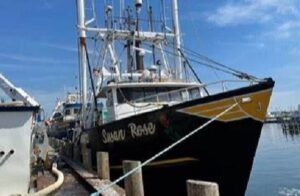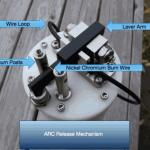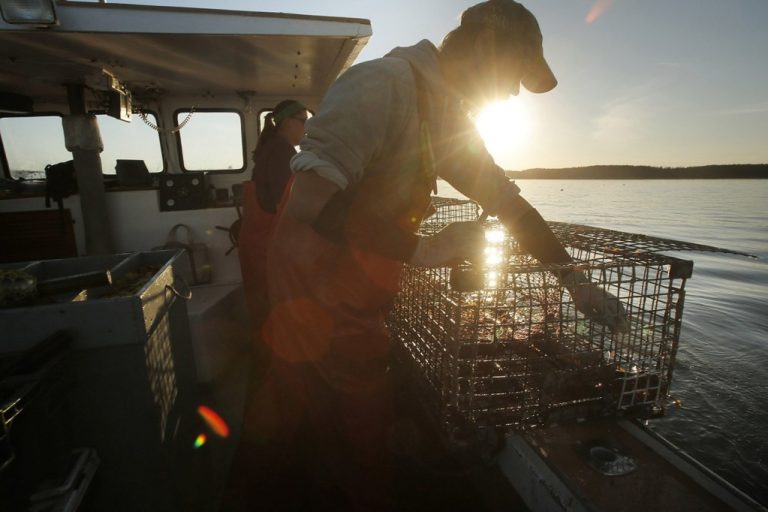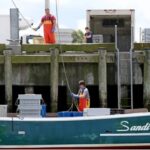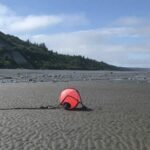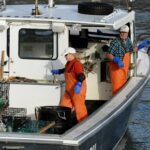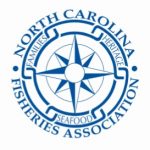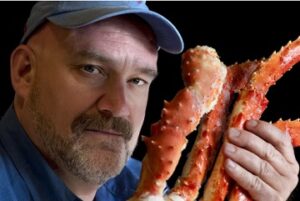BIG BOAT – small boat October 18, 2011, By Jim Kendall
I really dislike the issues of big boat vs small boat, and single boat owner vs multi boat owner. Were it only that simple! Not so long ago, a one-time small boat owner would dream of the day when he could build/buy a bigger boat, and the single boat owner also had visions of when he might buy/build anotherboat to compliment his current one.
Now that may not always be the case, particularly today, but in general that’s what many if not most fishermen dreamed about, once upon a time. Lately for many, it’s become a simple wish for survival. For some others, it’s a case of how much of it can I own or control?
When it comes to big & small boats all fishermen know, and should be the first to admit; that when at sea in a storm, there is no such thing as a “big” boat. At least not at that point in time! It’s often said that size doesn’t matter, but in the case of the NE Catch Shares/Sector (CS) program it does seem to be a factor in the early period of this ill-conceived management plan.
I was a member of the New England Fishery Management Council (NEFMC) and a committee member on the multispecies management committee (groundfish committee) in 1997 when FW 25 was being developed. In fact, I was the maker of the initial motion to design and implement Rolling Closures in the Gulf of Maine. These rolling closures were intended to reduce cod mortality in areas that traditionally held large aggregating amounts of spawning cod. The motion initially failed by one vote, but after lunch we were able to revisit the motion, when a member of the winning side of the vote, agreed to reconsider his vote.
Let me state that he only agreed to do so after several local Gulf of Maine fishermen told him that while they didn’t like it, they felt that it seemed to be the best way to reduce the mortality of cod.
As painful as these closures were apt to be for most of the small boat inshore fishermen, it was they who helped convince that Committee member to reconsider his vote. They knew that these closures, although bound to be difficult to live with, were the right thing to do for the rebuilding of the cod stocks. At that time they felt that while it was a severe measure that would cost them, they at some point would be rewarded when the cod resource rebuilt. Why wouldn’t they think and believe that? The NMFS and the Council were always telling them that their sacrifices were going to be rewarded once we rebuilt the stocks. What they, and I didn’t know was, that through future management manipulations, they (the rewards) would become impossible to live with!
The rolling closures did as designed. They reduced the amount of cod and other groundfish species caught by all the boats, big and small. However, the larger or more capable boats were able to fish other areas and at times that the smaller vessels couldn’t. Thus they were able to catch and land more pounds of fish that would eventually become the new currency for the management of the multispecies fishery in lieu of Days at Sea (DAS).
While these new Catch Share/Sector regulations initially are devastating the small boat inshore fishermen, have no fear; the larger boat fishermen are bound to follow. Once again, size won’t matter, it will only be the well-financed boat owner (big or small) who will benefit from their sacrifices, and he necessarily won’t even have to be (and most likely won’t be) a fisherman. Just another “land-dandy” with a Wall Street address.
Thanks to the enduring efforts of several well financed “Environmental Non-governmental Organizations” (ENGO), the Catch Shares plan is fast becoming Wall Street’s next great commodity investment. Just do a ‘Google’ or a ‘Bing” search on “Catch Shares” or some derivative and see what a huge issue they are; you’ll get “millions” of hits. The majority that I’ve read are in opposition, while most of those who favor Catch Shares are either from the ENGO community, investors, or are fishermen who have learned how to play the CS game, at least for the moment.
So far I’ve only spoken about how the current catch share plan is working here in New England fisheries. Perhaps, just perhaps, they might have worked if the CS plan was implemented fairly and honestly from the beginning, but we’ll never know now. After seeing how the majority of the resource quota is in the hands of about 20% of the permit holders, there are calls to impose limits on ownership or resource caps. Where was this management tool when CS were being developed? Hadn’t we as Fishery Management Councils already used it in other fishery management plans, but no one thought to do so here in the groundfish CS plan? Now we are retroactively going to use some hindsight & see where some vessel owners were smart enough to read the rules & see how the game needed to be played, & in doing so are actually winning?
If the Council does find a way to go back and impose caps on shares, or limit permit ownership, will it be because these owners figured out what they had to do to survive & prosper within the new management regime, or will it really be because they aren’t playing for the right team?
It is often said “that he who writes the rules wins the game”, in the case of CS, it actually was those that rewrote the definitions of the rules. Catch Shares became the de-facto for Individual fishing Quotas (IFQ) so that the CS plan could conveniently evade the requirement called the “New England and Gulf Referendum” as established in the “Magnuson-Stevens Fishery Conservation & Management Act” (Mag Act) as amended in 2006. Which called for a referendum in which 2/3 of the eligible voting permit holders approved the IFQ plan… *16 U.S.C. 1853a MSA, Section 303A (6) par. D – page 84
Apparently an “IFQ” by another name does not smell the same. As many of us know, in this case it’s not what it is called; CS don’t just smell – they stink! I too, believed as we were told, that all the sacrifices that the fishermen were making would help the stocks rebuild, and then the harvest could be reaped. Well that part was true; for the most part the stocks are either rebuilt to a great degree, or are about to soon be. The problem is that for those who did sacrifice so much, many are not going to be there to enjoy the rewards for all their costly and painful efforts.
I guess as in the real world, perhaps we should have remembered the old axioms; “kill or be killed’, “eat or be eaten”, “it’s a dog eat dog world out there”. After all, as seen in the “Wild Kingdom” we shouldn’t really be surprised when a member of the herd or group gets weaker, the scavengers slip in and start to feed upon the weakest, or least wary. Should we expect anything less?
There was a time when the ENGOs would often claim that having fishing industry people on the Councils (generally in reference to the NEFMC) “was like having the fox guarding the henhouse”? Or, that the majority of the votes on the Council were in the hands of the fishermen? When was the last time you heard those cries?
At a point in time where the US consumer is beginning to think buy locally, we as a nation are importing nearly 85% of our seafood. We are importing most of our seafood from countries and places where the words conservation and environment probably don’t even translate, let-alone resonate.
At the recent field hearings in Boston and Gloucester, it was stated in much of the testimony provided, that better more immediate science is needed to further protect the stocks while allowing for the harvest of the sustainable optimum yields. Now what we need to protect the remaining fishermen, and allow them to ‘reap the harvest of their labors’, is the ability to achieve optimum disclosure, and maximum accountability of all those who found that managing the fishermen was easier and more profitable than managing the fish.
Jim Kendall
New Bedford Seafood Consulting
Oct. 18, 2011

































